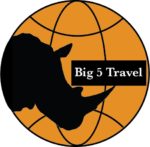
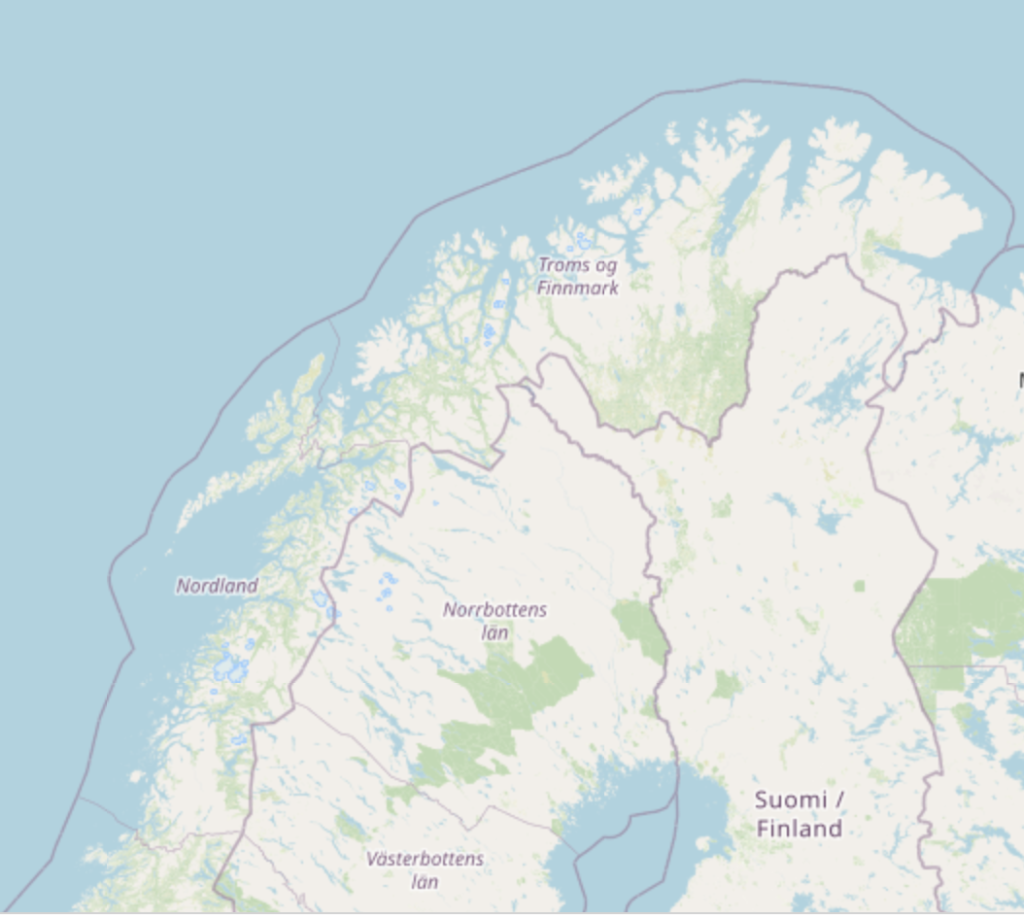
Northern Norway
This region of Norway, consisting of the two northernmost counties, Nordland and `Troms og Finnmark`, covers about a third of the Norwegian mainland.
Northern Norway is connected to southern Norway via coastal shipping and passenger ferries and by highways and a railroad that runs as far north as Bodø in the middle of the region. Principal economic activities include fishing, farming (as far north as 70° N), shipping and tourism.
Biggest towns: Mo i Rana, Mosjøen, Bodø, Narvik, Tromsø, Alta, Hammerfest and Harstad
Highest Mountain in Northern Norway: Oksskolten – 1919 masl -in Nordland county
Largest Island: Hinnøya

Northern Norway is known for :
- the midnight sun
- the northern lights.
- The unique landscape;
Helgeland – fascinating islands, including the Vega Islands, which are on Unesco’s list of world cultural heritage. Here is also Mount Torghatten, which has a hole through it, and the Mountain-range Seven Sisters.
Lofoten, Vesterålen and Senja – are known for their majestic mountains, magnificent nature and idyllic fishing villages.- Saltstraumen – outside Bodø – is one of the world’s strongest maelstroms.
- Svartisen glacier and intersecting Arctic Circle,
- Tromsø, also called “Paris of the North”, is the largest city in Northern Norway. Tromsø is also – the world’s northernmost university town.
- Being a multicultural region, the indigenous Sami people, Norwegian Finns (known as Kvens, distinct from the “Forest Finns” of Southern Norway), and Russian people (mainly in Kirkenes) live here.
- Finnmarksvidda – kingdom of the Sami and reindeer. Enormous in size, flat and slightly hilly, but still scenic.
- The North Cape – The outermost reach of Europe
- world-class seafood
- Unique experiences like whale safari, Orca safari, Eagle safari
Last summer was my first roundtrip in Northern Norway, visiting Lofoten, Vesterålen and Senja, and Helgeland on my way back home. What a great experience, northern Norway has a unique landscape – beautiful mountains and charming villages.
This summer, in August 2022, I once more travelled to northern Norway.
This time as north and east, one can travel to Norway; to Finnmark – to the North Cape,
to Norway’s northernmost city; Honningsvåg and Norway’s easternmost city: Vardø
And last but not least – to the last of my 18 Norwegian Scenic Routes; Havøysund and Varanger.
I am fortunate to live in a country with such a unique landscape!
NORDLAND
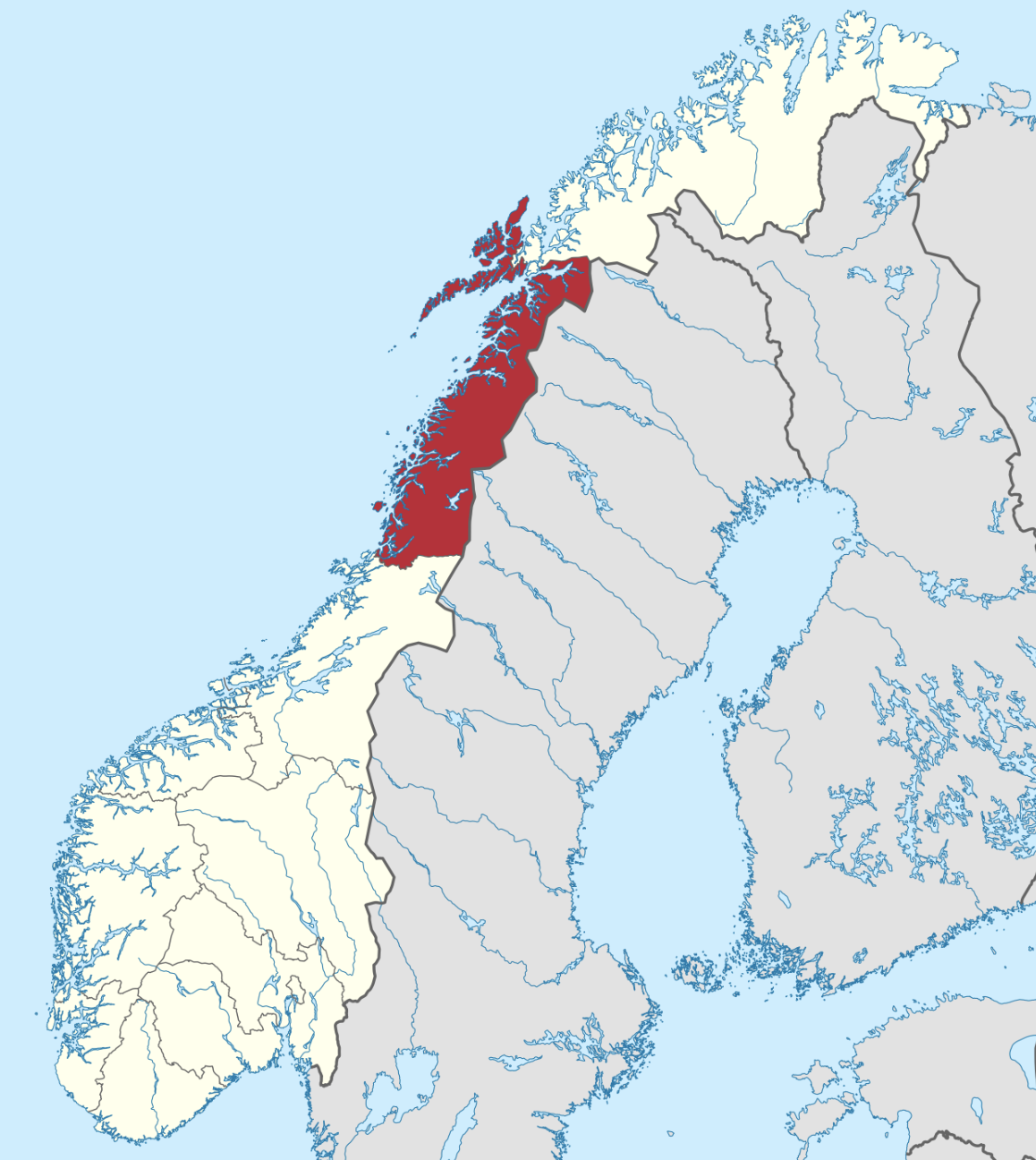
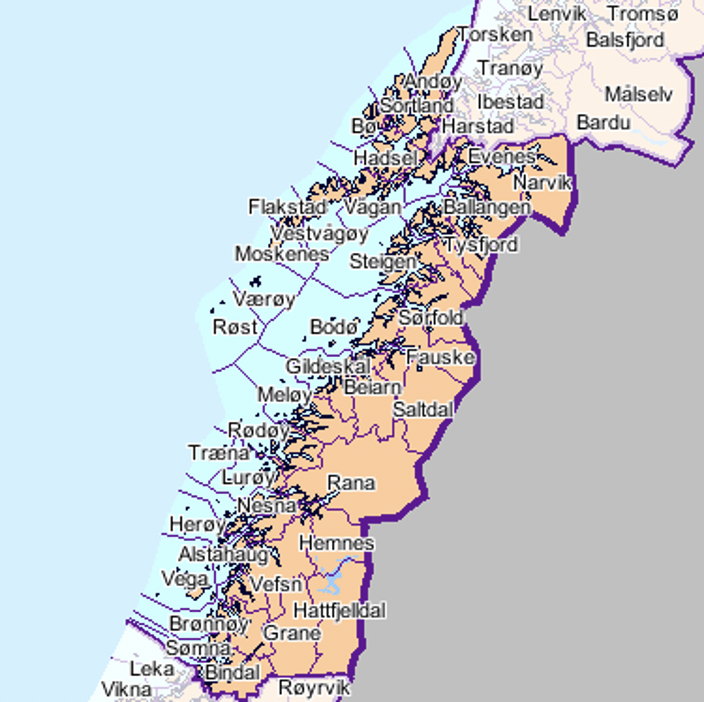
The county administration is in the town of Bodø. The remote Arctic island of Jan Mayen has been administered from Nordland since 1995.
Steep mountains near the sea and an almost flat lowland area in between the mountains and the sea is very typical for the long coastline in Nordland.
The county is divided into traditional districts:
- Helgeland in the south (south of the Arctic Circle) has many islands and skerries outside the coastal range, some flat, some with impressive shapes, like Mount Torghatten, which has a hole through it, and the Seven Sisters near Sandnessjøen. In the inner district of Helgeland is the mountain range Okstindan with the highest mountain in Northern Norway: Oksskolten 1,916-metre (6,286 ft) tall,
- Salten in the centre, with Notable peaks like Børvasstindan south. of Bodø, Suliskongen near Fauske (1,907 m/ 6,257 feet,) the highest mountain north of the Arctic Circle), the Steigartindan and the phallic Hamarøytinden.
- Lofoten, in the nórth-west, is a chain of peaks that jut out of the ocean. It looks barren from the mainland, but behind the violet-black peaks, there are also flatlands with good grazing for sheep, partially on soil made from seaweed.
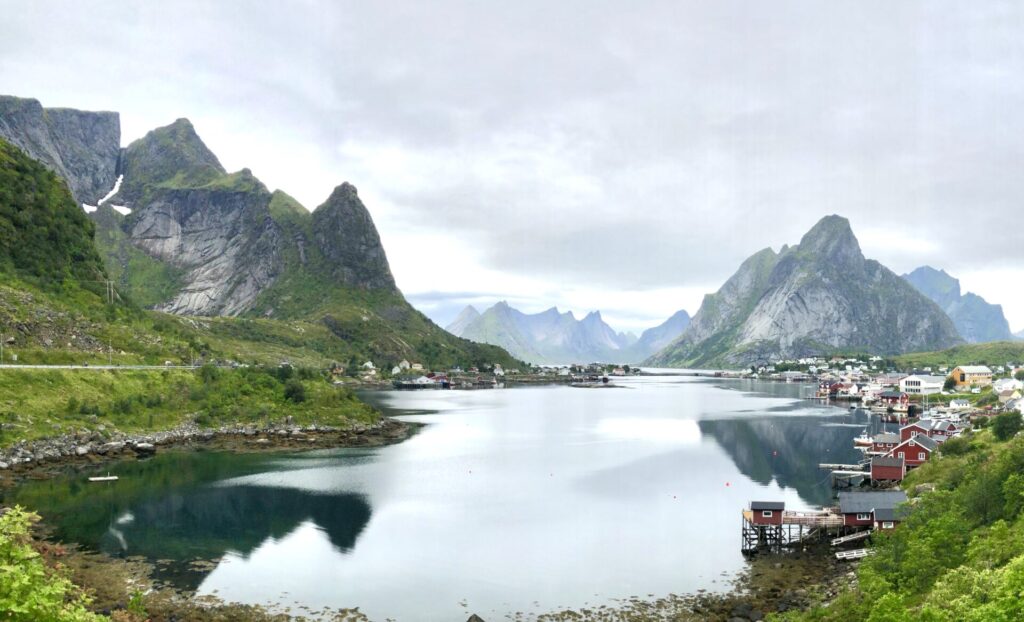
- Vesterålen, also in the north-east., consist of smaller and bigger islands with a huge variation in landscape.
- Ofoten in the northeast is a fjord landscape with high mountains, the highest is Storsteinfjellet in Narvik, 1,894 m above sea level, but the most well-known is Stetind, the national mountain of Norway. There are also glaciers, like Frostisen and Blåisen.
3 of the Norwegian Scenic Routes are in Nordland:
– Helgeland ( including the attraction of Torghatten and the Seven Sisters mountain range)
– Lofoten
– Andøya (i Vesterålen)
( Articles coming soon)
Other attractions/. articles from the area:
HAMARØY
TROMS AND FINNMARK


The county of “Troms og Finnmark ” was established on 1 January 2020 as the result of a regional reform. Its lifespan as a county is only temporary, as it was decided to cease to exist from January 1st 2024, – the county will be demerged back to the counties Finnmark and Troms.
The administrative centre of the county is split between two towns. The political and administrative offices are based in the city of Tromsø (the seat of the old Troms county). The county governor is based in the town of Vadsø (the seat of the old Finnmark county). The two towns are about 800 kilometres (500 mi) apart, approximately a 10-hour drive by car!
TROMS
The entire county, which was established in 1866, is located north of the Arctic Circle.
From 2024 it will again border Finnmark county to the northeast and Nordland county to the southwest. The county (and the city of Tromsø) was named after the island Tromsøya on which it was located (Old Norse Trums).
Troms has a very rugged and indented coastline facing the Norwegian Sea. However, the large and mountainous islands along the coast provide an excellent sheltered waterway on the inside. The county has surprising greenery for the latitude, and the inner waterways and fjords are lined with birch forests. Further inland there are extensive pine forests and highlands around the rivers Målselva and Reisaelva.
Big islands like Senja, Kvaløya and Ringvassøya have green, forested interiors and a barren, mountainous coastline, with smaller islands offshore.
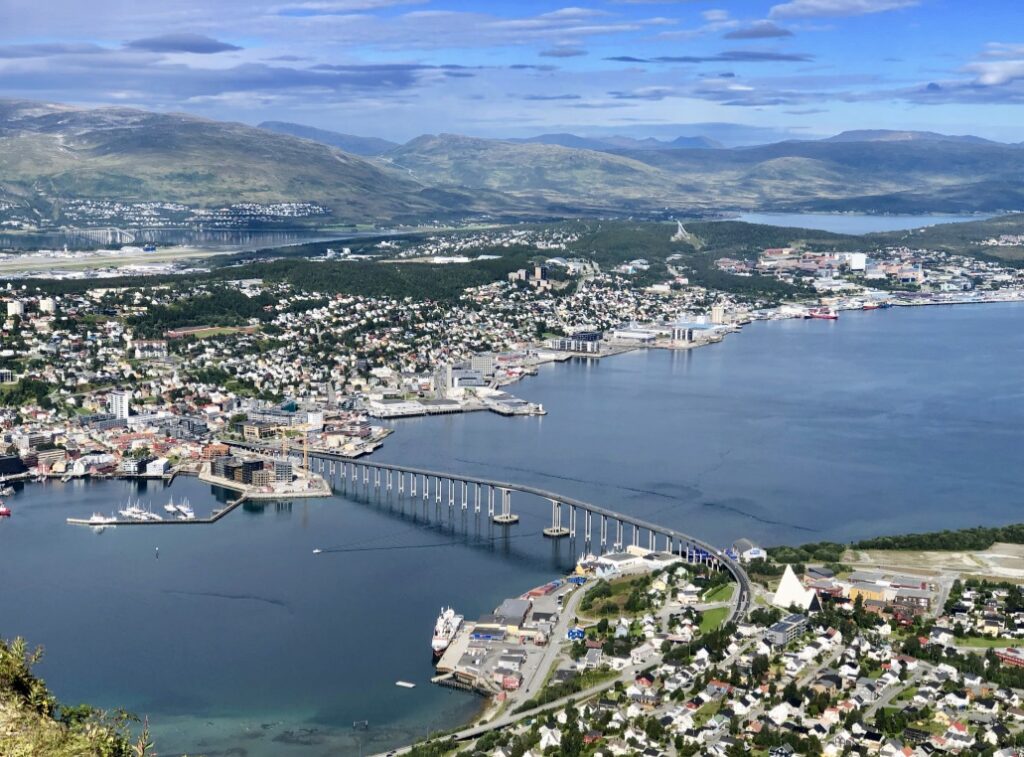
- Trømsø – is the is the largest city in Northern Norway. Tromsø is also – the world’s northernmost university town and the largest fishing port in Norway.
- Senja – Norway’s second largest island located midway between Tromsø and Harstad – is an Arctic vacation destination with great hiking opportunities, picturesque villages – and has an national scenic route.
- The Lyngen Alps are the highest mountains in the area, rising to 1,833 metres (6,014 ft), an area of glaciers and waterfalls.
- The 269 metres (883 ft) Mollisfossen waterfall in Nordreisa is the highest waterfall in the north, while Målselvfossen is Norway’s national waterfall.
FINNMARK
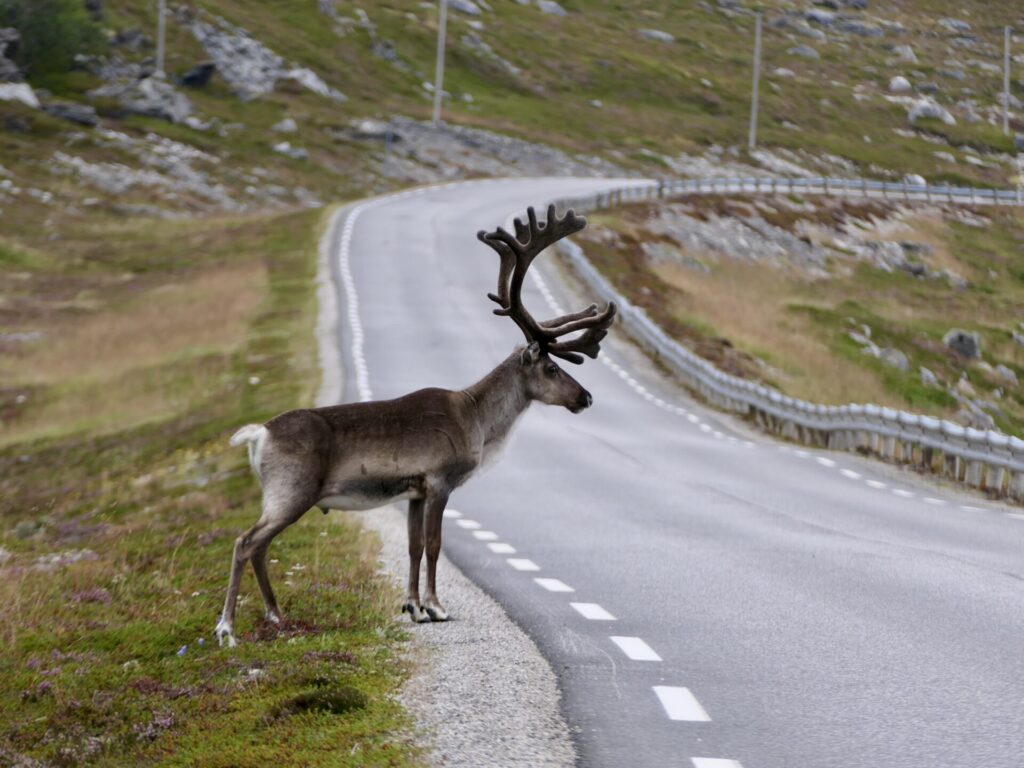
Some facts about FINNMARK:
On 1 January 2020, Finnmark was merged with the neighbouring county of Troms to form the new “Troms og Finnmark “county; however, it is scheduled to become a county again in 2024.
By land, it borders Troms county to the west, Finland (Lapland region) to the south, and Russia (Murmansk Oblast) to the east, and by water, the Norwegian Sea (Atlantic Ocean) to the northwest, and the Barents Sea (Arctic Ocean) to the north and northeast.
- Finnmark is the northernmost of the European continent as well as (east of Kirkenes) the easternmost part of the Nordic countries. Kirkenes sits at about 30°E, corresponding to St. Petersburg or Istanbul.
- Finnmark county has fjords and glaciers in the far southwest
- The northwestrn coasts are characterized by big islands like Sørøya and Seiland.
- In Alta you will find Northern Europe’s largest concentration of rock art made by hunter-gatherers. The Rock art is listed on the UNESCO World Heritage List – and. comprises both rock carvings and rock paintings made from 7000 to 2000 years ago.
- Vardø is the oldest town in northern Norway, founded in1789. Vardø is also Norway’s only town in the Arctic climate zone. and Norway’s northeasternmost town.
The first settlement in Vardø dates back to the 1330s when Håkon Magnusson had Vardøhus Fort built to defend Norway’s eastern border. - In the 17th century, Vardø was the center of the medieval witch hunt, where some of the worst witch trials in Northern Europe were held. 91 people who were found guilty of witchcraft and burnt at the stake.
- The inland is covered by Finnmarksvidda, a relatively barren plateau about 300 to 400 metres (980 to 1,310 ft) high, with many lakes and rivers like Alta-Kautokeino and Tana/Deatnu. Even at this latitude, pine forests grow naturally in lowland areas inland.
- The municipality of Kautokeino is about 10,000 square km with a population of less than 3,000. Almost 10 % of Kautokeino’s area is lake surface. In total, there are well over 100,000 lakes in Finnmark.
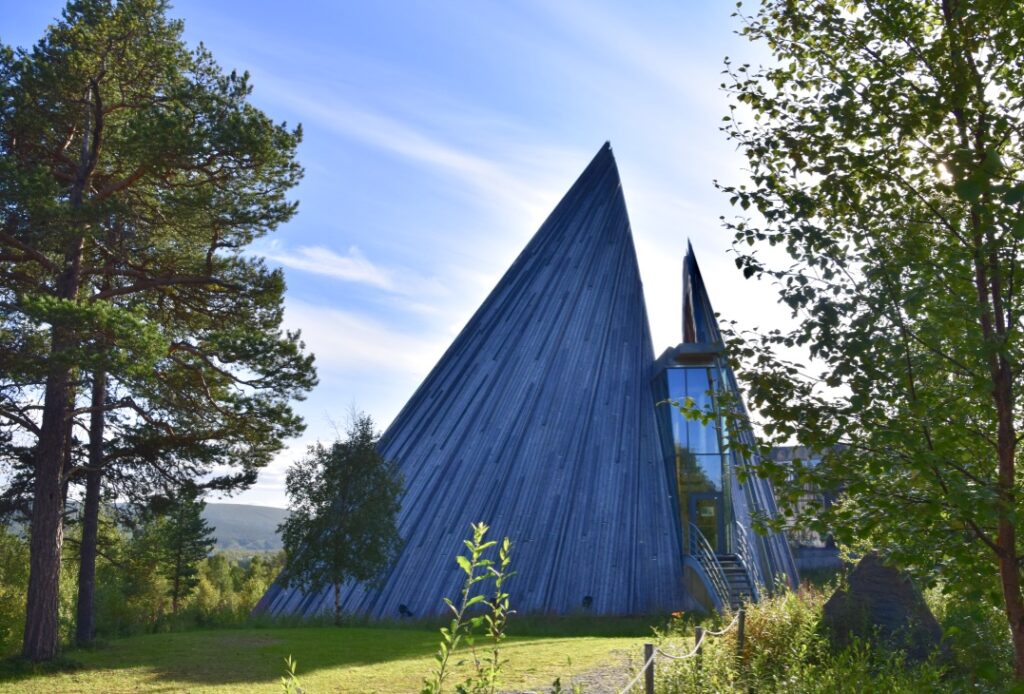
- In Karasjok you will find the Sami Parliament, which is shaped like a lavvo, and other important Sami institutions. The Sámi Parliament of Norway is the representative body for people of Sámi heritage in Norway. It acts as an institution of cultural autonomy for the Sami people of Norway.
Karasjok also houses The Sámi Museum which has over 5,000 objects in the collections. This is the largest museum collection representing Sámi cultural history in Norway. The museum consists of a main building with exhibitions and magazines as well as an open-air museum. - In Eastern Finnmark, the borders of Finland, Norway and Russia coincide, with no less than three different time zones within a few steps.
- Nordkapp is promoted as the northernmost point of mainland Europe, which is not exactly true. Nordkapp is on an island, Magerøya, and the neighbouring point, Knivskjellodden, is actually 1,457 m (4780 ft) further north (on the same island). Nordkapp is however the northernmost point in Europe reachable by the international road network.
- The northernmost point on the actual mainland (islands like Magerøya not included) is Kinnarodden 60 km to the east, some 25 km wilderness hike from Mehamn village (which is on Hurtigruten and has an airport on the Tromsø–Kirkenes service).
Finnmark – Norway’s northernmost and easternmost county – was my goal for the road trip this summer 2022. I have never been as far north in my home country, and this summer, I visited the last two of Norway’s 18 Scenic routes: Havøysund and Varanger. The route to Havøysund runs parallel to Nordkapp/the North Cape, and Varanger runs from Varangerbotn to Hamningberg.
My first stop in Finnmark was Alta, where we visited two of the main attractions;
Northern Lights Cathedral and the Rock Art inscribed into UNESCO’s World Heritage List.
